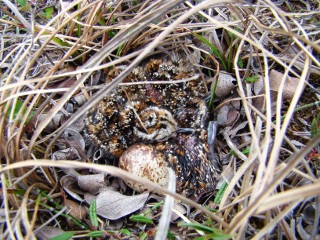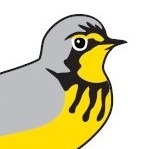Photo: Mark Peck
Nest Monitoring Code of Conduct

Semipalmated Sandpiper nest Photo: Zoé Lebrun-Southcott
In Canada, birds mostly breed during the warmer months of the year. For many species, if an individual loses a clutch, it won’t nest again until the following season.
To avoid jeopardizing nesting success, all observers must approach nests with care and caution. By following the code of conduct below, you will reduce the risk of attracting predators to a nest; causing unintentional harm to a nest; or causing adults to desert a nest.
Species at risk are further protected by federal and/or provincial laws and you may require a permit to monitor their nest(s). If you would like to monitor the nest of a species at risk, please contact us to determine if a permit is required.
Searching for Nests:
- Be careful of your movements
- Be aware of potential predators
- Be observant of bird behaviour
Monitoring Nests:
- Choose an appropriate time to visit
- Watch for predators
- Observe from a distance first
- Minimize the length of your visit
- Minimize disturbance at the nest site
- Do not leave a dead-end trail
- Do not handle eggs or young
- Respect private land
Keep in Mind!
If you’re uncertain about whether you’re causing disturbance to a nest, please err on the side of caution. Please DO NOT collect data at the expense of the birds.
Project NestWatch is a Birds Canada program, in collaboration with Environment Canada, and Provincial and Regional Nest Record Schemes.
For more information, please contact:
projectnestwatch@birdscanada.org

